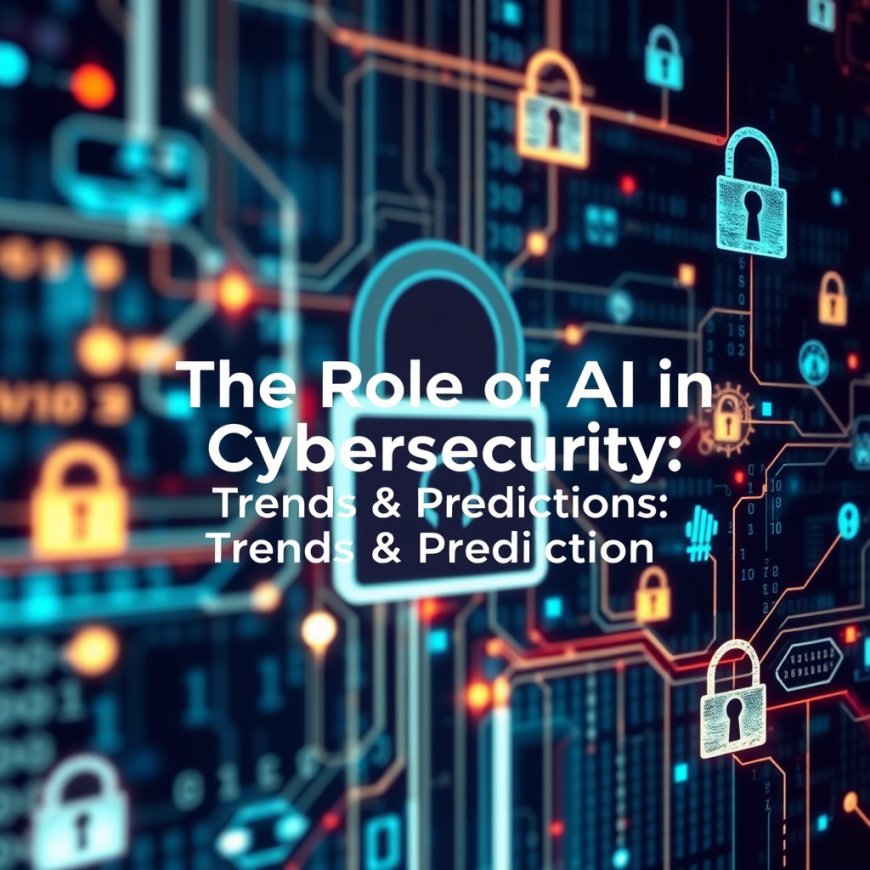The Role of AI in Cybersecurity: Trends & Predictions
Discover how AI is reshaping cybersecurity in 2023! Explore trends like adversarial AI, behavioral biometrics, and predictions for autonomous threat defense. Stay ahead of hackers now!

Introduction: AI – The New Guardian of Digital Security
As cyberattacks grow in scale and sophistication, traditional security measures struggle to keep pace. Enter Artificial Intelligence (AI)—a game-changer in cybersecurity. From detecting zero-day threats to automating incident responses, AI is transforming how organizations defend their digital assets. In this article, we explore the latest trends, real-world applications, and bold predictions for AI in cybersecurity.
How AI is Revolutionizing Cybersecurity
AI empowers cybersecurity systems to:
-
Detect Threats Faster: Machine learning (ML) algorithms analyze petabytes of data to spot anomalies, malware, and phishing attempts in real time.
-
Automate Responses: AI-driven tools can isolate infected devices, block suspicious IPs, or patch vulnerabilities without human intervention.
-
Predict Risks: Predictive analytics forecast potential breaches by identifying patterns in historical data.
-
Enhance Accuracy: Reduce false positives by 70%+ through contextual analysis of user behavior and network traffic.
Top 5 AI Cybersecurity Trends in 2023
-
AI-Driven Threat Hunting
Proactive threat detection using AI models trained on global attack datasets to identify novel threats like ransomware or supply chain attacks. -
Behavioral Biometrics
AI monitors user behavior (keystrokes, mouse movements) to flag unauthorized access, even if credentials are stolen. -
Adversarial AI
Cybercriminals now weaponize AI to create deepfake phishing, evade detection, or automate brute-force attacks. Defense systems must adapt! -
Zero-Trust with AI
AI enforces “never trust, always verify” policies by continuously assessing device, user, and network trustworthiness. -
Cloud-Native AI Security
As companies migrate to the cloud, AI secures multi-cloud environments by monitoring APIs, containers, and serverless workloads.
Predictions: The Future of AI in Cybersecurity
-
Autonomous Security Operations Centers (SOCs): AI will manage 80% of routine tasks like log analysis by 2025 (Gartner).
-
AI-Powered IoT Defense: With 30+ billion IoT devices by 2025, AI will secure smart homes, factories, and cities.
-
Ethical AI Regulations: Governments will mandate transparency in AI security tools to prevent bias or misuse.
-
Collaborative AI Networks: Organizations will share threat intelligence via decentralized AI models to combat global attacks.
Real-World Applications
-
Fraud Prevention: Banks use AI to detect unusual transactions (e.g., a $10,000 purchase in another country).
-
Email Security: Tools like Darktrace’s Antigena neutralize phishing emails mid-attack.
-
Vulnerability Management: AI prioritizes critical patches by predicting exploit likelihood.
Benefits & Challenges
✅ Pros:
-
24/7 threat monitoring
-
Scalability for large networks
-
Cost savings (reduce manual labor by 40%)
⚠️ Cons:
-
High implementation costs
-
Risk of adversarial AI attacks
-
Ethical concerns around data privacy
Conclusion: Embrace AI or Fall Behind
AI isn’t just a tool—it’s becoming the backbone of modern cybersecurity. While challenges like ethical AI and adversarial threats persist, businesses that integrate intelligent systems today will lead the fight against tomorrow’s cybercrime. Ready to future-proof your defenses? The AI revolution starts now.
What's Your Reaction?
 Like
0
Like
0
 Dislike
0
Dislike
0
 Love
0
Love
0
 Funny
0
Funny
0
 Angry
0
Angry
0
 Sad
0
Sad
0
 Wow
0
Wow
0






































